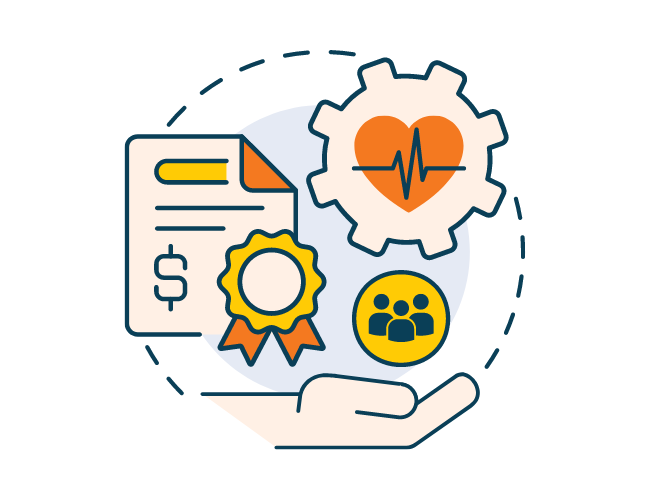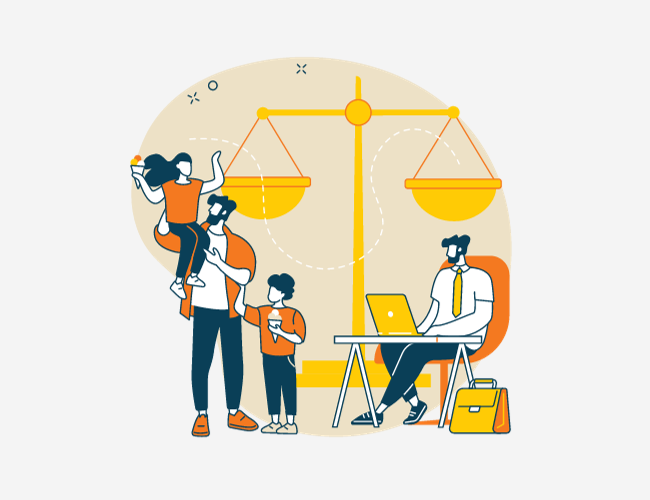Over the course of the pandemic, rates of anxiety and depression rose dramatically. Studies indicate that the percentage of U.S. adults experiencing symptoms of depression increased nearly 20% in the early months of social distancing. Stress and anxiety increased as well, with one study finding that between December 2020 and July 2021, the percentage of employees reporting burnout and physical symptoms of stress increased by 21% and 17%, respectively.
Employers quickly took notice and began increasing their efforts to support mental health in the workplace. According to the 2022 Employee Wellness Industry Trends Report, 90% of employers are increasing their investments in mental health solutions in 2022, an increase of 24 percentage points from 2018.
Many employers feel their heightened focus on mental health is sufficient to address their employees’ needs. According to a survey from digital health platform Headspace, 94% of CEOs think they do enough to support mental health in the workplace. However, only 67% of workers agree. Given the magnitude of the disparity in perceptions, it’s important to understand what accounts for this discrepancy so companies can adapt their wellness strategies and employees can receive the mental health help they deserve.
Employers Are Reducing Their Focus On Mental Health
Throughout the pandemic, there was an uptick in the amount of support employers provided for their employees’ mental health. Moreover, many organizations report they plan to continue increasing their support in 2022. However, many employees feel their organization’s efforts have not been sustained. According to Headspace’s report, just 25% say their company has kept up its focus on mental health in the last year.
Given that pandemic-related stressors are subsiding, employers might be assuming mental health benefits have become less important. However, a return to “business as usual” is premature. For one thing, employees are still recovering from years of prolonged stress. For another, they are dealing with a whole new set of stressors as they return to the office and manage a mountain of novel challenges.
More importantly, even if mental health challenges subside, pre-pandemic levels of support were not enough. As a result, the heightened focus on mental health that arose during the pandemic must become the new status quo.
Mental Health Strategies Are Fragmented
Mental health offerings are often highly fragmented. One report indicates that employers are investing and a wide array of offerings, from additional paid time off (PTO) to employee assistance programs to mindfulness training.
In some ways, a diverse array of solutions could be a good thing, as it provides employees with many options to choose from. At the same time, it might mean that employers are spreading their mental wellness dollars too thin (across too many solutions) rather than focusing on a smaller selection of offerings that are more likely to be effective.
It’s also possible that having too many options is a bad thing. Finding and deciding upon a treatment option can seem overwhelming when dealing with a mental illness. A broad range of offerings might exacerbate this problem, meaning employees in need could decide to forgo treatment. Thus, while customizability is important, so is having a simple set of solutions to navigate through.
Some Common Offerings Are Overused
Rather than having too many solutions, it could be that companies are providing the wrong ones given their employees’ needs. For example, 71% percent of companies are investing more in mindfulness and meditation therapies in 2022. While this therapy is helpful for many groups, it has its limitations. One study conducted by Professor of Psychiatry Willoughby Britton found that excessive mindfulness can backfire, especially for individuals who are already prone to engage in mindfulness-related processes (e.g., self-observation, psychological distancing, threat attendance, etc.).
Employers must survey their employees to ensure the solutions they provide are desirable from the perspective of their workers. Every organization is unique, and there is no one-size-fits-all solution.
Mental Health Benefits Can Be Inaccessible And Lack Inclusivity
Mental health offerings can only have their intended impact if employees feel they are easy to utilize. Unfortunately, this often isn’t the case. A combination of confusing health insurance plans, high premiums or co-pays, and multi-month wait times can make it nearly impossible for employees to utilize their organization’s mental health benefits effectively.
These barriers have had a measurable impact. Only 66% of respondents in Headspace’s survey stated they felt their company’s mental health offerings were accessible. In response, companies must re-examine their offerings, choose cost-effective plans, and take time to explain their benefits packages clearly.
Organizations must focus on inclusivity as much as accessibility. This is because underrepresented groups often face unique treatment barriers, resulting in worse mental health outcomes. As the American Psychological Association reports:
Racial/ethnic, gender, and sexual minorities often suffer from poor mental health outcomes due to multiple factors including inaccessibility of high-quality mental health care services, cultural stigma surrounding mental health care, discrimination, and overall lack of awareness about mental health.
Companies must pay close attention to these barriers and ensure they provide inclusive and equitable wellness solutions for mental health and every other dimension of wellness.
Takeaway
While employers are confident in their efforts to address employee mental health, workers appear to disagree. As leaders continue to prioritize mental health, they must be mindful of how their solutions might be less impactful from their employees’ perspectives.
For more information on the continued importance of mental health support and the role resilience can play in helping employees bounce back from the pandemic and persist through novel challenges, check out Jen Arnold’s webinar, Resilience: Why We Need It Now More Than Ever.












